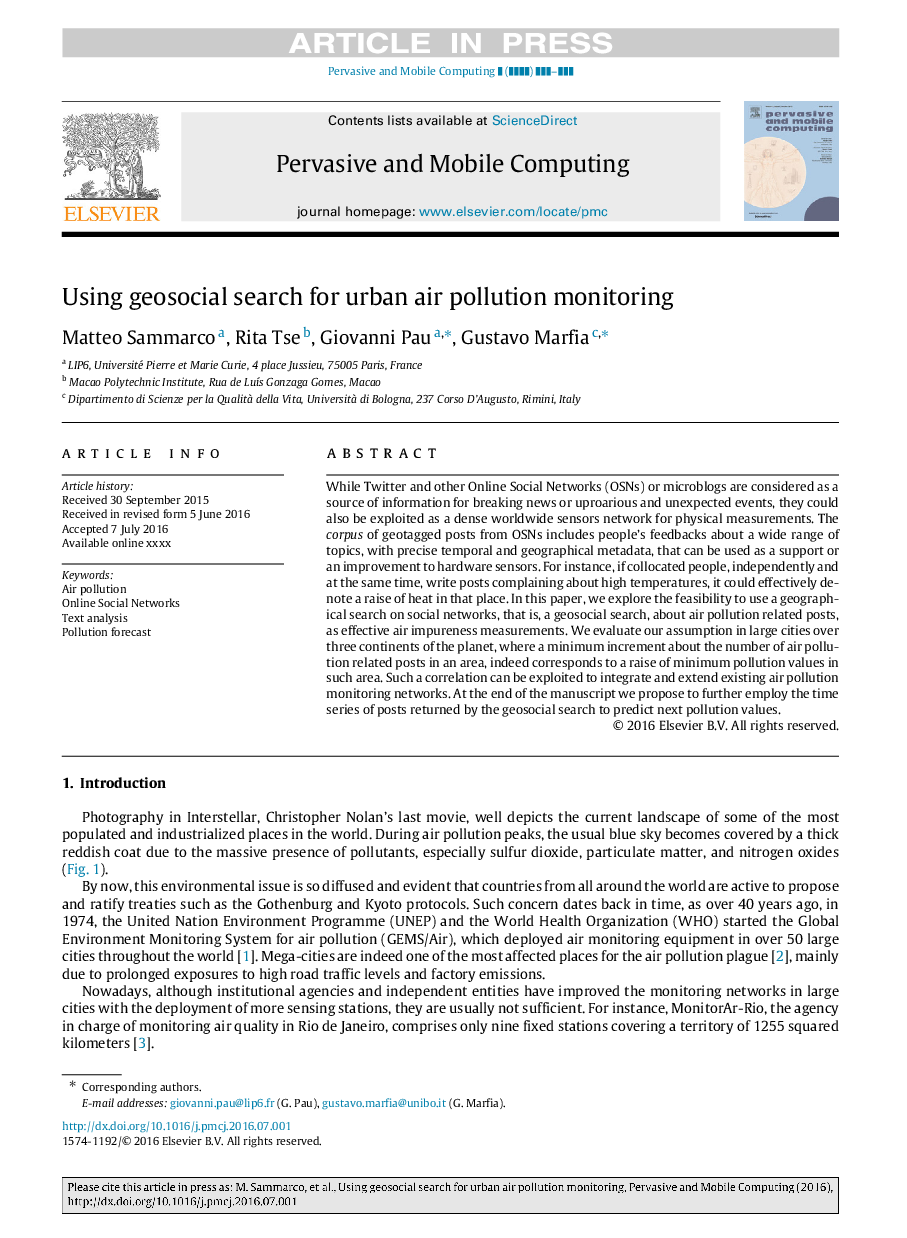| Article ID | Journal | Published Year | Pages | File Type |
|---|---|---|---|---|
| 4957545 | Pervasive and Mobile Computing | 2017 | 17 Pages |
Abstract
While Twitter and other Online Social Networks (OSNs) or microblogs are considered as a source of information for breaking news or uproarious and unexpected events, they could also be exploited as a dense worldwide sensors network for physical measurements. The corpus of geotagged posts from OSNs includes people's feedbacks about a wide range of topics, with precise temporal and geographical metadata, that can be used as a support or an improvement to hardware sensors. For instance, if collocated people, independently and at the same time, write posts complaining about high temperatures, it could effectively denote a raise of heat in that place. In this paper, we explore the feasibility to use a geographical search on social networks, that is, a geosocial search, about air pollution related posts, as effective air impureness measurements. We evaluate our assumption in large cities over three continents of the planet, where a minimum increment about the number of air pollution related posts in an area, indeed corresponds to a raise of minimum pollution values in such area. Such a correlation can be exploited to integrate and extend existing air pollution monitoring networks. At the end of the manuscript we propose to further employ the time series of posts returned by the geosocial search to predict next pollution values.
Related Topics
Physical Sciences and Engineering
Computer Science
Computer Networks and Communications
Authors
Matteo Sammarco, Rita Tse, Giovanni Pau, Gustavo Marfia,
